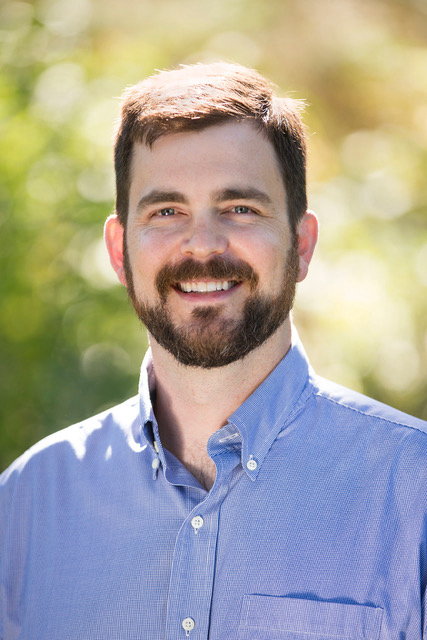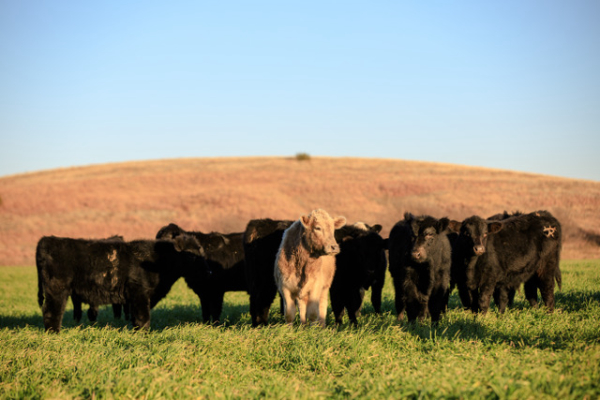
Lance Irving, National Director for Sand County Foundation's Leopold Conservation Award
|
Lance reached out to a few months back, as an avid reader of Archery Wire, and wanted to share more about the Sand County Foundation and what it does. Frankly, I didn’t know much about the foundation or what Lance’s role is there, so yes, of course I want to learn more! Lance is the national director for the Sand County Foundation’s Leopold Conservation Award. The prestigious award is presented to farmers, rancher and foresters in 13 (and a growing number of) states. The Sand County Foundation takes its name from A Sand County Almanac, penned by Aldo Leopold. Lance shares a wealth of information below, but the biggest takeaway is actually in the very last paragraph and I want to point it out here. He writes, “If you know a farmer or rancher who is doing great things on their land, nominate them for the Leopold Conservation Award. If you want a seat at the table to start building relationships within agriculture and conservation, have your organization or brand sponsor the award.” I hope you take Lance up on that offer – Michelle Scheuermann, editor, Archery Wire.
Lance, share with us briefly what is A Sand County Almanac and why should Archery Wire readers pay attention?
Published 70 years ago, A Sand County Almanac is regarded as a cornerstone of modern conservation. Its author, Aldo Leopold, was a scientist, professor, ecologist, forester, hunter and environmentalist. He wrote about “a land ethic” and believed humans are part of the landscape and not just outside of it. The timeless knowledge in the book helps us connect to how our actions on the land are a key to managing for conservation benefit. In one of his earlier writings, Game Management, Leopold introduced the idea that the five tools of wildlife management are the axe, cow, plow, fire and gun.
As hunters, Archery Wire readers are all involved in game management and conservation. Learning about one of conservation’s pioneers helps us understand where some modern ideas originated. It also helps us understand how far we have come, and how far we have yet to go.
You shared with me earlier that more than 75% of land in the U.S. is privately owned - so if hunters/conservationists truly want to make a large scale difference, you have to engage the private landowner. What first steps do you take to talk with a private landowner to engage in conservation practices? What is typically the pushback?
It’s not something most people think about very often. Yet, most of the continental U.S is privately owned, and the majority of that is working land (farms ranches and managed forests). When you look states like Nebraska and Kansas, about 98% of all the land is privately owned. That means that just about all of the wildlife habitat is on private land. Therefore, the hunting and conservation communities need to partner with private landowners (which often means farmers and ranchers) to achieve meaningful results. The same is true even in a state like Utah, where only about a quarter of the land is privately owned, because the private land is some of the most productive wildlife habitat.
Conservation and production agriculture can and should have a symbiotic relationship. Healthier land is more productive land for agriculture and wildlife. I have yet to meet a farmer or rancher who doesn’t want to do right by the land, and pass their farm or ranch to the next generation in better shape than when they got it. The challenge is often how to implement conservation practices. Cross fencing for rotational grazing or planting native seed for buffer areas take time and money. Other barriers to getting things done can be not having the resources to acquire the right equipment, or breaking free of the mindset that, “I do it this way because my father did it this way.” Finally, the agriculture economy is struggling, so it can be a challenge for farmers to do the things they want to.

Can you share with us one of your favorite projects to date?
Meeting so many great people and hearing their success stories is so exciting. I was talking with a North Dakota rancher who has embraced many conservation practices. He was telling me that the same improvements that were helping his cattle herd, were also helping deer and pheasants. It’s just like the old saying that 'what’s good for the herd is good for the bird.' Within a few years the wildlife populations had grown to the point where he could start an outfitting business for hunters. By creating better habitat he created a new revenue stream by hosting hunters. This income reinforced that the conservation practices paid for themselves and he now looks at things differently. Now when he is planning what to plant and how to graze, he pays as much attention to how those actions will affect the deer and pheasants. He’s now a cattle AND wildlife rancher.
What’s your biggest challenge in 2019? How can we help?
One of the biggest challenges is for groups with diverse interests to form productive partnerships to achieved a shared goal. There are groups that disagree with nuances of how to achieve conservation success, but most can agree that the end results of having more and better wildlife habitat, and cleaner water are worthy goals. I would encourage folks to get involved, because hunters, farmers and conservationists working together creates a powerful force.
No matter if you’re hunting on ranched public land or a privately-owned farm, If you're hunting whitetail on a lease in the Midwest, talk to the farmer about what they are doing and how you can help. If you're accessing public land through a ranch out West, work with that rancher to understand the challenges and opportunities on that land. If you know a farmer or rancher who is doing great things on their land, nominate them for the Leopold Conservation Award. If you want a seat at the table to start building relationships within agriculture and conservation, have your organization or brand sponsor the award. It’s all about seeing the end goal and realizing that working together creates huge benefits for hunters and landowners.